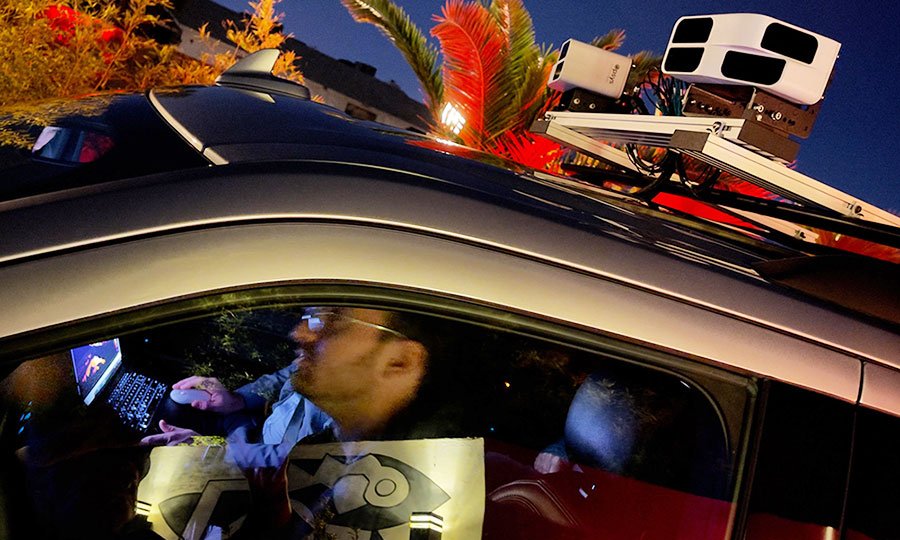<!–*/ */ /*–>*/
| Israeli lidar startup inks production deal |

Lidar company Opsys Tech says a million new vehicles a year will be equipped with its lidar sensors starting in 2025.
The Israeli sensor company has reached a deal to supply lidar to global auto supplier SL Corp., which will utilize the lidar sensors in production vehicles as early as 2024, Eitan Gertel, Opsys’ chairman, said this week at CES.
Buoyed by similar agreements with two Chinese automakers that Hyundai-backed Opsys Tech has not yet disclosed, Opsys Tech believes it is on the fast track to reaching high volumes of deployed lidar systems in Asia that will equip both passenger cars and commercial trucks. Combined, the three contracts will reach the million-vehicle mark on an annual basis. Production could begin next year.
SL Corp. will work to integrate the company’s lidar systems into headlights and taillights, which helps to standardize both their use and care.
“It simplifies integrating it onto existing platforms,” Gertel said. “It’s much easier and you don’t have to worry about other issues. Obviously you have to interface and do the data processing, but the lidar itself doesn’t cause people to have to rethink how they mount sensors on a car.”
— Pete Bigelow
What you need to know
Volvo expands Google partnership Sweden’s Volvo Cars was an early adopter of Google’s Android Automotive, an operating system that delivers infotainment services and integrates with vehicle systems, such as climate control and on-board cameras.
Volvo is now expanding that partnership — becoming the first automaker to directly connect its vehicles with the Google Home ecosystem and other Google Assistant-enabled devices.
Volvo owners can now manage their cars while at home or on the go, through any personal device that has Google Assistant. Future functionalities include charging scheduling, which allows customers to set specific times to start charging their vehicles.
Volvo will also introduce YouTube video playback as a built-in app in its cars with a Google Android-based infotainment system, allowing drivers and passengers, when stopped, to have access to streaming video content.
The expanded deal was announced Wednesday as part of CES.
— Urvaksh Karkaria
CES panel: Diversify for more inclusion in mobility Companies working on autonomous vehicle technology should include diverse groups in the process to ensure they are helping to create a more inclusive future of mobility, panelists said Wednesday.
“Everyone brings a different perspective, and that’s why everyone needs that seat at the table because every nuance really matters,” said Shelley Zalis, CEO of the Female Quotient, a company dedicated to advancing equality in the workplace. “More talent diversity leads to more inclusive mobility options.”
Zalis moderated the discussion on the importance of diversity and inclusion in the autonomous-vehicle and mobility sectors as part of the virtual Equality Lounge program at CES. She was joined by panelists Amanda Ventura Zink, public affairs manager for Google affiliate Waymo, and Alex Otte, national president of Mothers Against Drunk Driving.
— Audrey LaForest

Roundup
Vietnamese automaker VinFast is offering a sizable bonus to U.S. buyers willing to make a small deposit while they wait for their electric crossovers to arrive, presumably by the end of the year.
Mercedes: Vision EQXX could herald 620-mile EV by mid-decade.
Cadillac’s newest concept, the InnerSpace, is a two-passenger electric and autonomous luxury vehicle engineered to enhance the occupant experience. Here’s a photo gallery.
Aptiv showcased at CES how it is positioned for the wider adoption of software-based vehicle technologies.
Brain food
From personal music players to games consoles, Sony Group has often gambled in order to be a pioneer, but a leap into electric cars could take the risks to a new level for the Japanese consumer tech giant, Reuters reports.
Last mile
A BMW might be the “Ultimate Driving Machine,” but that doesn’t mean passengers can’t have fun, too.
The German automaker teased a multimedia system at CES that brings a cinema experience to its vehicles.
The “Theatre Screen” is a panoramic 31-inch, 8K display intended for rear-seat passengers. It spans almost the entire interior width of the vehicle and integrates a Bowers & Wilkins Diamond Surround Sound System.
The display is housed in the vehicle headliner and accessed using touchpads in the rear doors.
When activated, roller sun blinds for the side windows and the rear window are closed. Ambient lighting in the rear of the vehicle is dimmed. Sadly, there’s no built-in popcorn machine.
The system is powered by Amazon’s Fire TV operating system, which offers streaming music and video services.
— Urvaksh Karkaria